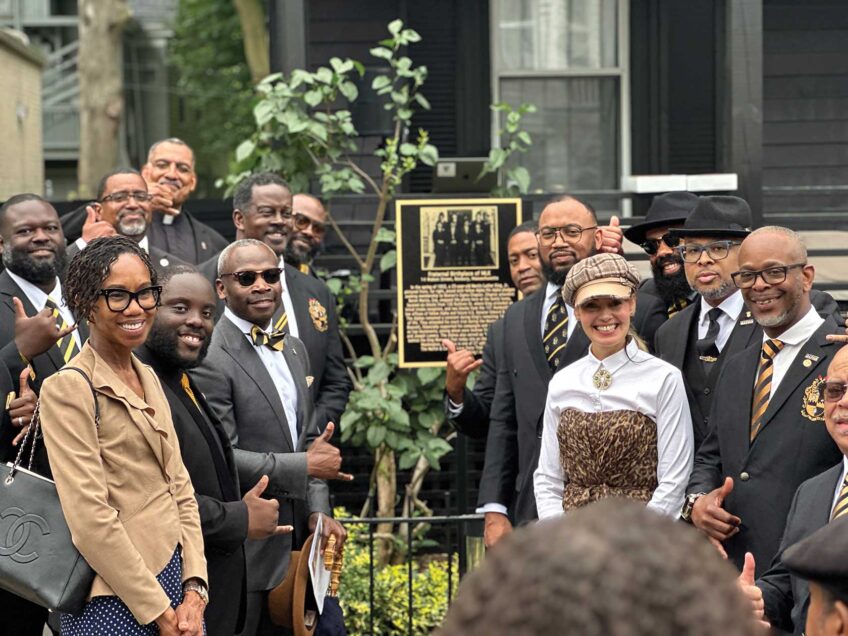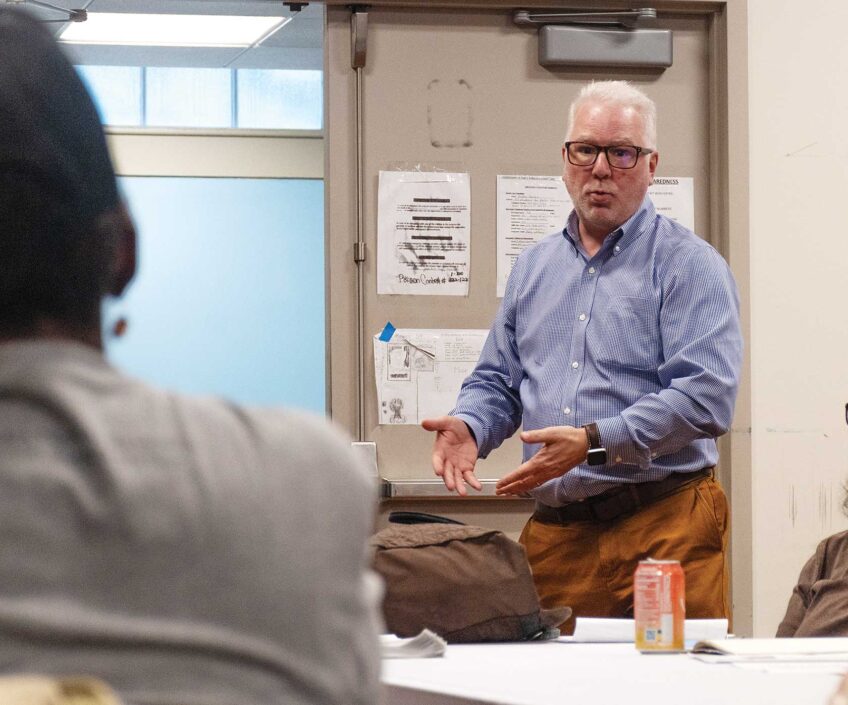Dorchester’s Bowdoin-Geneva neighborhood land use, future
Development choices can shape area

Several large development projects in Dorchester’s Bowdoin-Geneva neighborhood could play a significant role in shaping the neighborhood’s future, including who will live there and how they will live. Community members are keeping an eye on what is getting built and how.
Changes already are present, with a triple-decker on Fox Street selling for approximately $726,000 about a year ago, said Davida Andelman, a long-time resident active in the community.
“Gentrification — it’s coming to this neighborhood,” she said. “It is already here. If you’re lucky enough to own your own house in Bowdoin-Geneva, you’re sitting on a gold mine.”
Andelman and Anh Nguyen, director of Bowdoin-Geneva Main Streets, said in separate phone interviews that the neighborhood most needs low-income housing, especially that targeted at families and seniors, as well as developments that promote local economic development.
Affordable housing is in the pipeline. Current development projects in the area include 191-195 Bowdoin Street, where developers propose to turn two vacant lots into a four-story mixed retail and affordable housing development; 16 Ronald Street, a Boston Planning and Development Agency-approved four-story development that would include two studio units and 52 one-bedroom affordable senior housing units; and 121-123 Hamilton Street, a BPDA-approved project by the Pine Street Inn that would transform a vacant lot into 52 units of senior housing designated for chronically or formerly homeless individuals moved in from other Pine Street Inn sites that do not meet their needs.
Senior housing
With the baby boomer population aging, Andelman said senior housing is a pressing need in Bowdoin-Geneva and the city as a whole. The neighborhood is younger than much of Boston, making it especially important to ensure senior residents can remain to present a stabilizing influence, she said.
The 16 Ronald Street development speaks to this need, with 52 units for those age 62 and older. According to a letter filed with the BPDA by developer Hearth, Inc, a portion of units would be designated for those making up to 30 percent of Area Median Income ($29,450 for a family of four, according to Affordable Housing Online). Other units would be for those making 50 to 60 percent AMI (for a family of four, $49,050 and $58,900, respectively, according to the BPDA).
While the Pine Street Inn housing on Hamilton Street targets seniors, it is expected to serve new residents moving permanently into the neighborhood. Speaking generally, Nguyen questioned the merit of any projects that are not aimed at serving local residents, but Andelman says the Pine Street development is valuable for reducing overall city need for senior housing and will bring in more patrons for local businesses.
Family housing and income
Another major need: family housing. A 2014 study of those living within a half-mile radius of the heart of Bowdoin-Geneva Main Streets found that there are approximately 6,160 households in the area, of which 47 percent have children. In comparison, only 23 percent of households citywide had children in 2014. Speaking about the neighborhood today, Nguyen said many households also are headed by single mothers.
The Vietnamese American Initiative for Development, Inc. (Viet-AID) last year released a call for applications for one-, two- and three-bedroom units available in its completed housing development at 331-337 Washington Street and 322-336 Washington Street. Viet-AID’s now-under-review proposal for 191-195 Bowdoin Street also would include units sized for families: two-bedroom and three-bedroom units, in addition to one-bedrooms. Eleven units would be for those making up to 30 percent AMI and the rest for those making up to 60 percent AMI.
However, area median incomes are not tailored to individual neighborhoods and 60 percent AMI is out of reach for many residents, Nguyen said. While this bracket targets those earning up to $58,900 for a family of four, the 2014 Main Streets District study found the median household income in the immediate Main Street district area was $41,600. Several local store owners assessed that they earn about $500 per month, Nguyen said. In contrast, a 60 percent AMI unit caps monthly rent at $1,065 for a one-bedroom, $1,216 for a two-bedroom and $1,369 for a three-bedroom. Additionally, the unemployment rate in the area is over 20 percent, according to Nguyen.
What would be ideal would be offerings with deeper levels of affordability and with affordable homeownership opportunities, Nguyen said.
“To come out of poverty, you really need to build assets,” Nguyen said. “Displacement will happen when people aren’t able to build roots. Being so impoverished, there’s a high likelihood that a lot of people in this neighborhood who’ve been here a long time are going to be displaced.”
Andelman also said there is need for more moderate and workforce housing, along with more affordable.
Awareness
Tackling another part of the pipeline, Nguyen said communication improvements are needed to ensure that local residents get a shot at affordable housing coming online in the area. Many people in the neighborhood speak non-English languages and so preparing a housing packet in English may be a challenge. Additionally, many do not have access to computers and so would miss online advertisements.
She said that resources should be provided in languages such as Cape Verdean Creole, Spanish, French and Vietnamese and distributed in print.
Jobs and business
The other prong to reducing housing costs is bolstering economic development so residents can afford higher rents. Developers whose projects include commercial space should put out a call to local residents see if any would like to open a business there, Nguyen said. Small businesses tend to hire locally and Bowdoin-Geneva owners may be less likely to require English language fluency from their employees than other businesses, she said.
Andelman spoke of the need for a greater variety of businesses to draw more people to an area already saturated with nail and hair salons, cell phone stores and bodegas. Nguyen, in a separate interview, said cafes and restaurants in particular present a powerful opportunity: there is little formal education required to establish such a business, they do not face competition from online retailers and they can be an economic catalyst by drawing visitors from outside the area.
“We need more ground floor retail that can accommodate things like restaurants,” Nguyen said. “You can get everything on Amazon except culture. People still go out to restaurants for food.”
More cafés also would improve resident’s lives, Andelman said. There is a café in the area — Ashley’s, now called One Family Diner — but it closes in the afternoon and is busy on weekends. There is strong interest in establishing a café in some of the commercial space at 191-195 Bowdoin, where it could sell pastries, bread products, and a variety of coffees along with a community gathering space, she said.
The Dorchester Food Coop, which previously sold food products on one of the vacant lots developed into 191-195 Bowdoin Street, also has proposed becoming an occupant of some of the ground floor retail space.






